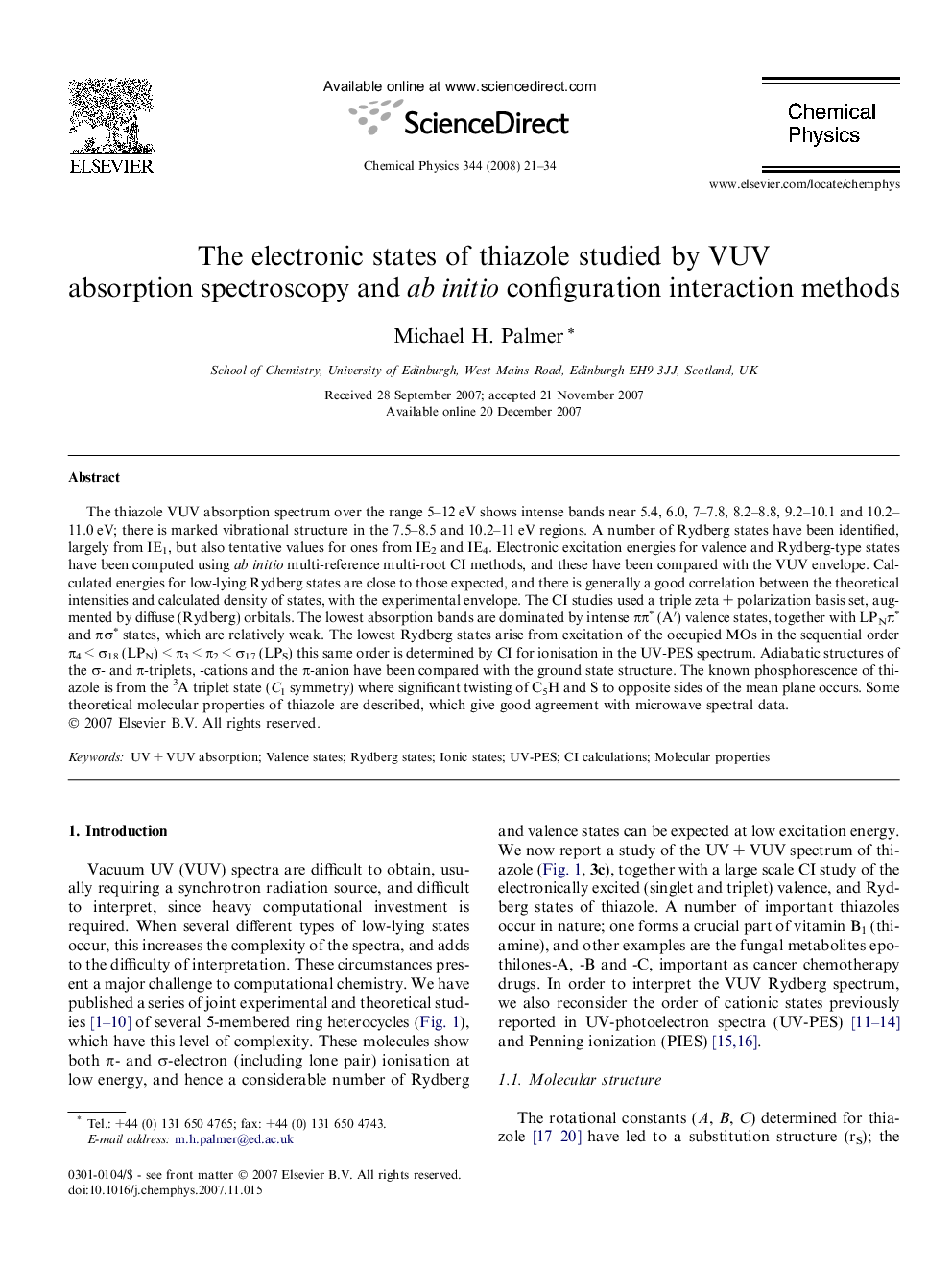| Article ID | Journal | Published Year | Pages | File Type |
|---|---|---|---|---|
| 5376208 | Chemical Physics | 2008 | 14 Pages |
Abstract
The thiazole VUV absorption spectrum over the range 5-12 eV shows intense bands near 5.4, 6.0, 7-7.8, 8.2-8.8, 9.2-10.1 and 10.2-11.0 eV; there is marked vibrational structure in the 7.5-8.5 and 10.2-11 eV regions. A number of Rydberg states have been identified, largely from IE1, but also tentative values for ones from IE2 and IE4. Electronic excitation energies for valence and Rydberg-type states have been computed using ab initio multi-reference multi-root CI methods, and these have been compared with the VUV envelope. Calculated energies for low-lying Rydberg states are close to those expected, and there is generally a good correlation between the theoretical intensities and calculated density of states, with the experimental envelope. The CI studies used a triple zeta + polarization basis set, augmented by diffuse (Rydberg) orbitals. The lowest absorption bands are dominated by intense ÏÏâ (Aâ²) valence states, together with LPNÏâ and ÏÏâ states, which are relatively weak. The lowest Rydberg states arise from excitation of the occupied MOs in the sequential order Ï4 < Ï18 (LPN) < Ï3 < Ï2 < Ï17 (LPS) this same order is determined by CI for ionisation in the UV-PES spectrum. Adiabatic structures of the Ï- and Ï-triplets, -cations and the Ï-anion have been compared with the ground state structure. The known phosphorescence of thiazole is from the 3A triplet state (C1 symmetry) where significant twisting of C5H and S to opposite sides of the mean plane occurs. Some theoretical molecular properties of thiazole are described, which give good agreement with microwave spectral data.
Related Topics
Physical Sciences and Engineering
Chemistry
Physical and Theoretical Chemistry
Authors
Michael H. Palmer,
